Growing potatoes in containers is a delightful venture that combines practicality with the joy of gardening. Whether you’re a seasoned green thumb or just starting your gardening journey, cultivating potatoes in pots offers a rewarding experience that fits any space, from sprawling backyards to cozy balconies. By choosing to grow potatoes in containers, you not only enjoy the satisfaction of nurturing your food but also gain control over soil quality, drainage, and pests—common concerns in traditional garden beds.
In this article, we’ll guide you through the exciting process of container potato gardening, from selecting the right varieties to understanding the nuances of soil and watering needs. You’ll discover how easy it is to harvest fresh, flavorful potatoes right from your patio or porch, adding a homegrown touch to your meals. For beginners, this method simplifies the world of vegetable gardening, offering a manageable, contained environment to learn and thrive. Meanwhile, experienced gardeners will appreciate the opportunity to experiment with different potato types and yield-boosting techniques.
As you embark on this potato-growing adventure, you’ll learn practical tips on container selection, preparation, and maintenance. We’ll also cover essential insights into sunlight requirements and how to optimize growth throughout the season. By the end of this article, you’ll be equipped with the knowledge to grow bountiful potato crops with ease and confidence, regardless of your gardening expertise. Get ready to transform your outdoor space into a productive potato haven, and enjoy the delicious rewards of your efforts.
Select Suitable Potato Varieties
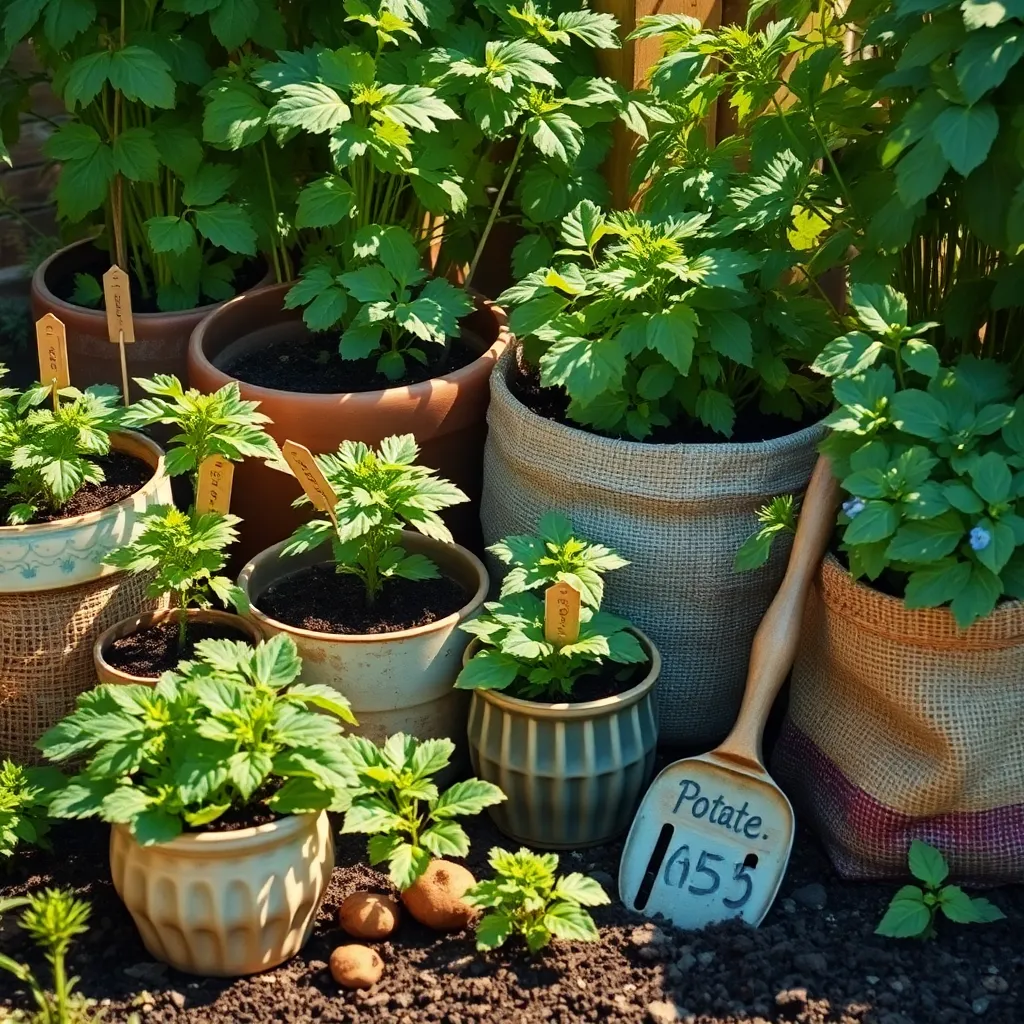
Choosing the right potato variety is crucial for successful container gardening. Early-maturing varieties, like ‘Swift’ and ‘Rocket’, are excellent choices as they require less space and time to grow.
For beginners, opting for small, round potatoes such as ‘Charlotte’ and ‘Maris Peer’ can be rewarding. These varieties are known for their adaptability to confined spaces and their consistent yield.
Experienced gardeners might want to experiment with heritage varieties like ‘Pink Fir Apple’ or ‘Ratte’. These can add unique flavors to your harvest, although they may need a bit more space and attention.
Container-grown potatoes thrive when provided with well-draining, loose soil, enriched with compost. Ensure that your chosen variety has at least six hours of sunlight daily and keep the soil consistently moist, but not waterlogged.
Prepare Container with Drainage
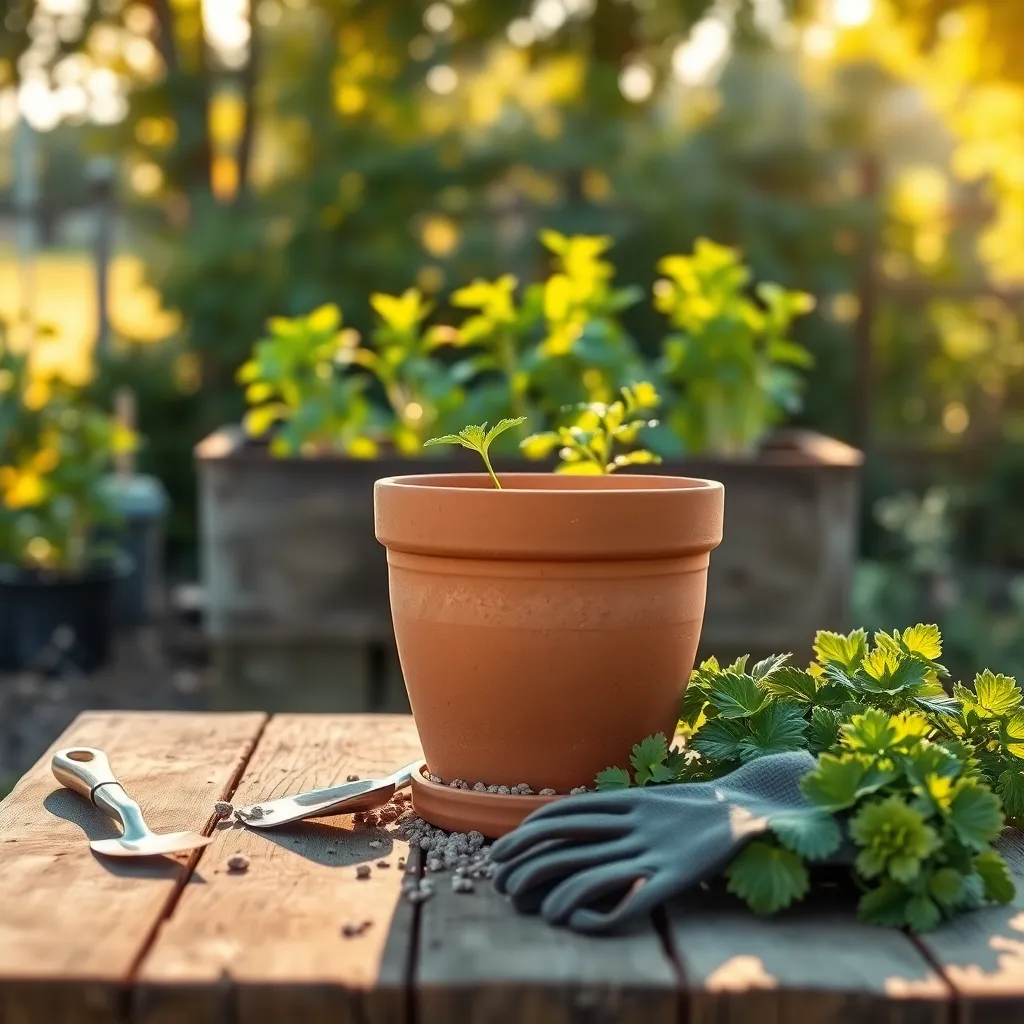
Ensuring proper drainage in your container is crucial for growing healthy potatoes. Without adequate drainage, water can pool at the bottom, leading to root rot and other issues.
Begin by selecting a container that has several drainage holes at the base. If your chosen container lacks these holes, you can easily drill them yourself to improve water flow.
Next, add a layer of coarse material such as gravel or broken pottery at the bottom of the container. This layer will prevent soil from clogging the drainage holes while also aiding in water runoff.
Fill the container with a well-draining potting mix, ideally one specifically formulated for vegetables. A mix containing peat, compost, and sand will offer the perfect balance of moisture retention and drainage.
For an advanced tip, consider mixing in a slow-release fertilizer to provide your potatoes with a steady supply of nutrients as they grow. This will ensure vigorous growth and help prevent nutrient deficiencies throughout the growing season.
Fill with Quality Potting Mix
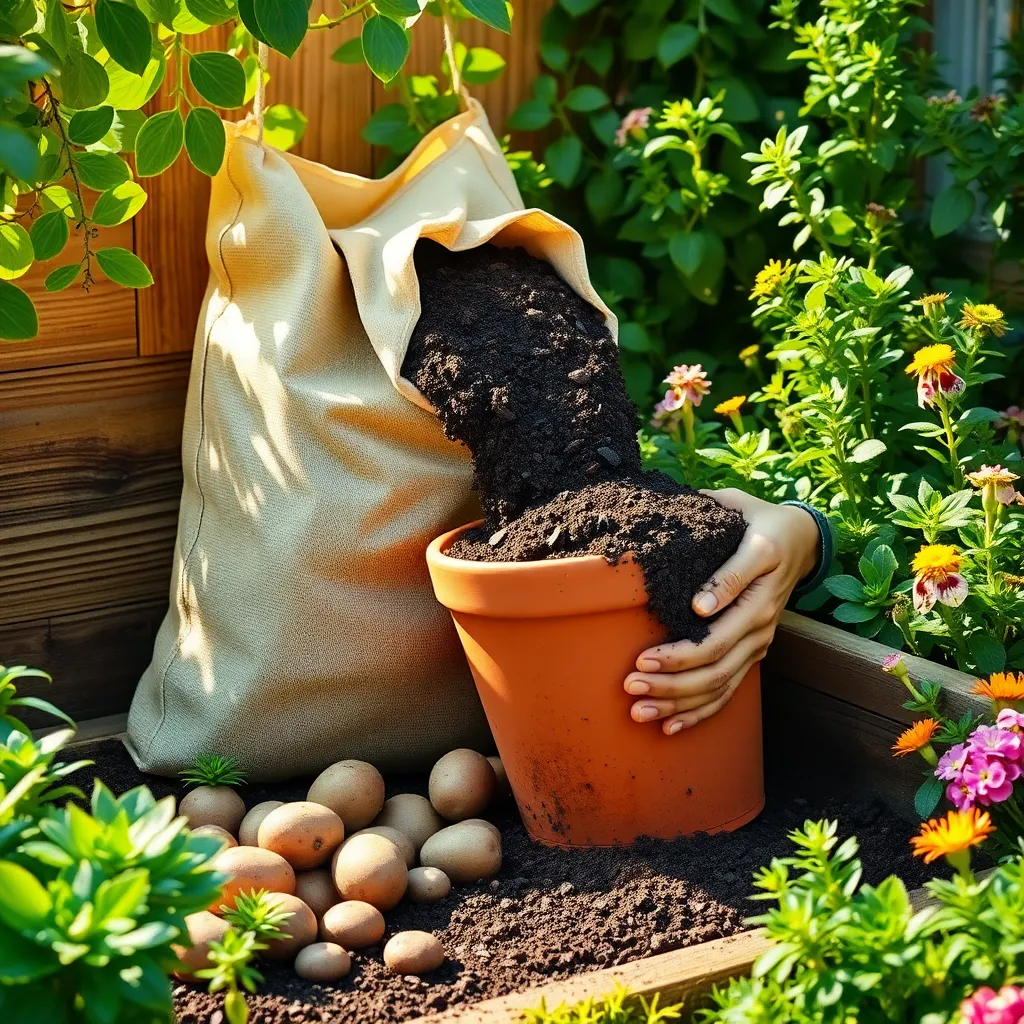
When growing potatoes in containers, using a quality potting mix is essential for optimal growth. A well-draining mix ensures that the roots receive adequate oxygen, preventing rot and encouraging strong tuber development.
Choose a potting mix that is rich in organic matter, as this will provide the necessary nutrients for your potatoes to thrive. Look for a blend that includes components like peat moss, compost, and perlite to maintain a balance of moisture retention and aeration.
For those new to gardening, consider purchasing a pre-mixed potting soil designed specifically for vegetables, which is readily available at most garden centers. Advanced gardeners may choose to create their own mix by combining equal parts of loamy soil, compost, and sand to enhance drainage and fertility.
It’s important to fill your container to about two-thirds full, leaving ample space for adding more soil as the potato plants grow and require hilling. This technique promotes the development of more tubers as you gradually cover the stems with additional soil throughout the growing season.
To enhance the nutrient content, you can mix a slow-release organic fertilizer into the soil before planting. This provides a steady supply of nutrients over time, reducing the need for frequent feeding and simplifying your potato-growing process.
Plant Seed Potatoes Correctly
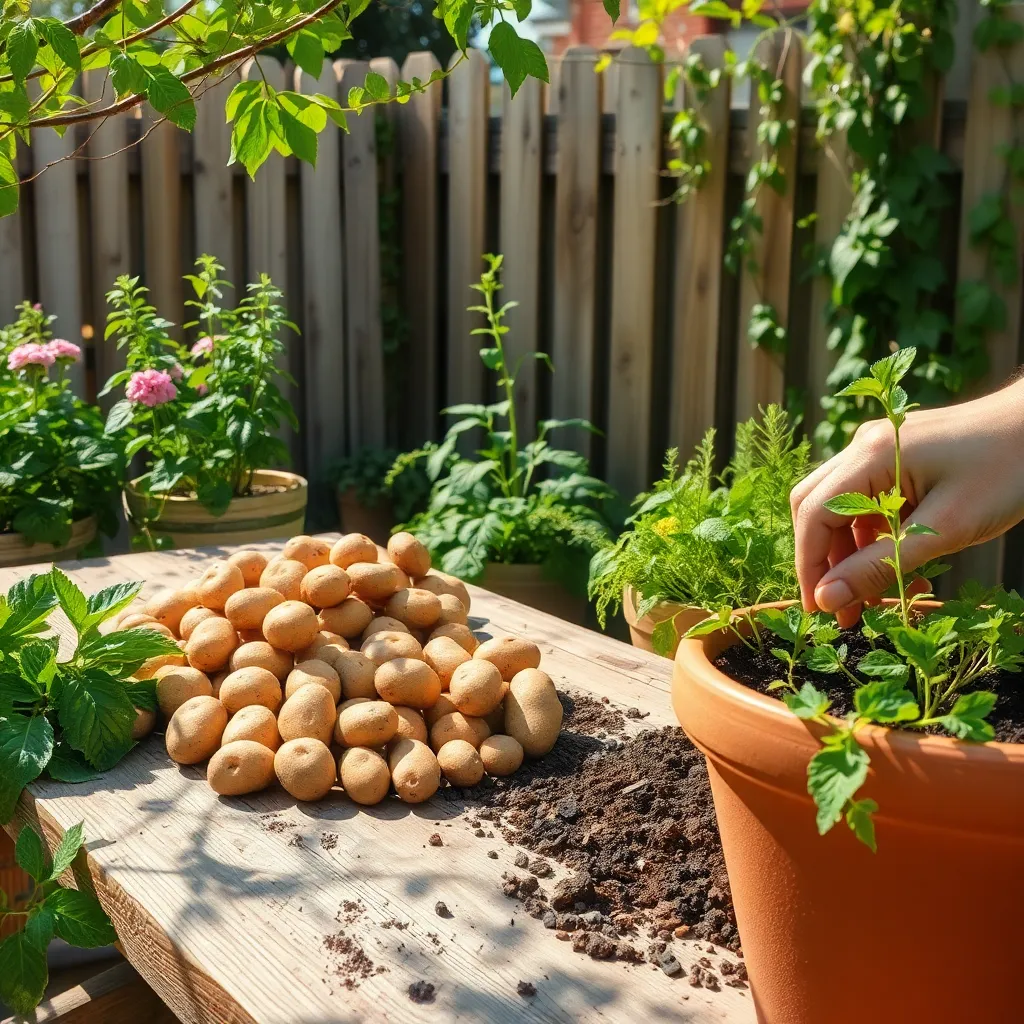
Once your container is filled with quality potting mix, it’s time to plant your seed potatoes. Choose certified seed potatoes to prevent the spread of disease and ensure healthy growth. These can be found at garden centers or ordered online from reputable suppliers.
Before planting, cut larger seed potatoes into pieces, making sure each piece has at least one eye, or sprout. Allow the cut pieces to dry for a day to form a protective callous, which helps prevent rotting.
Plant the seed potatoes with the eyes facing upwards, about 6 inches apart and 4 inches deep in the soil. Cover them lightly with potting mix and water them thoroughly. This will create a moist environment that encourages the potatoes to sprout.
As the potato plants begin to grow, gradually add more potting mix to cover the stems, a process known as “hilling.” This encourages more tubers to form and protects them from sunlight, which can turn them green and inedible. Repeating this process every couple of weeks will maximize your yield.
Water and Monitor Growth Regularly
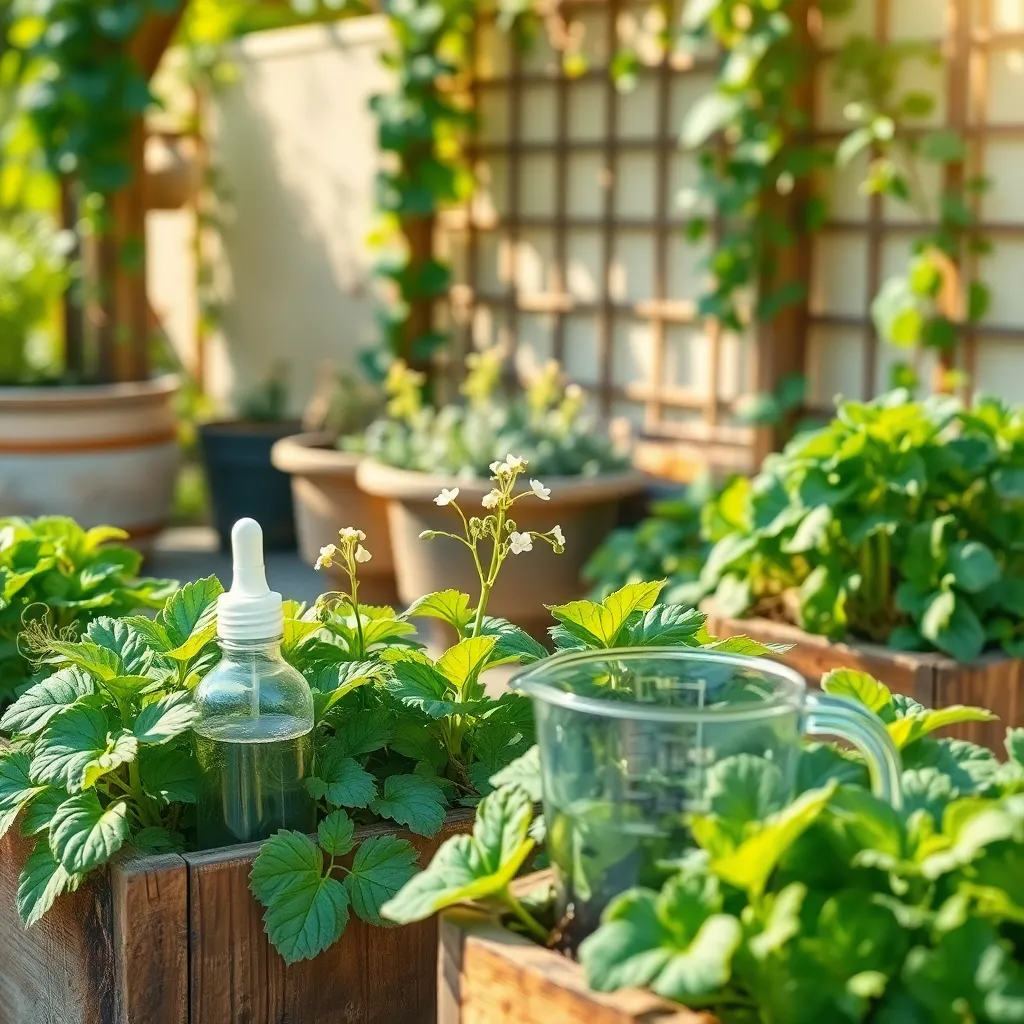
Maintaining a consistent watering schedule is crucial for growing potatoes in containers. Potatoes require regular moisture to develop properly, but overwatering can lead to rot, so ensure the soil is kept moist but not waterlogged.
It’s important to check the soil moisture level frequently, especially during hot weather. Stick your finger about an inch into the soil; if it feels dry, it’s time to water your plants.
For those using containers, consider using a soil mix that retains moisture yet drains well, such as a blend of compost, peat, and perlite. Adding mulch on top of the soil can help retain moisture and reduce the frequency of watering.
Beyond watering, monitor the growth of your potato plants regularly to catch any potential issues early. Keep an eye out for pests like aphids and beetles, which can damage the foliage and affect overall plant health.
If you notice yellowing leaves or stunted growth, it might indicate nutrient deficiencies or overwatering. Adjust your watering habits and consider adding a balanced fertilizer to support the plant’s nutritional needs.
Conclusion: Growing Success with These Plants
As you’ve journeyed through this guide on ‘How to Grow Potatoes in Containers,’ you’ve uncovered five essential concepts that mirror the nurturing of meaningful relationships. First, we explored the importance of selecting the right container, akin to creating a supportive environment in relationships. Next, we delved into the significance of quality soil, paralleling the foundation of trust and communication. Planting the seed potatoes highlighted the necessity of initiating and investing in connections. Weeding and watering underscored the need for consistent care and attention, and finally, harvesting the potatoes reminded us of the rewards that come from patience and effort.
Now, take a moment to identify one area in your relationships that could use a little extra care, just like your container garden. Whether it’s a heartfelt conversation or a shared activity, commit to nurturing it today.
To keep these insights at your fingertips, bookmark this article for easy reference. Remember, just as with growing potatoes, relationship success thrives on ongoing effort and thoughtful cultivation. With your newfound knowledge, you’re well-equipped to nurture the bonds that matter most. Go forth and cultivate connections that flourish!
